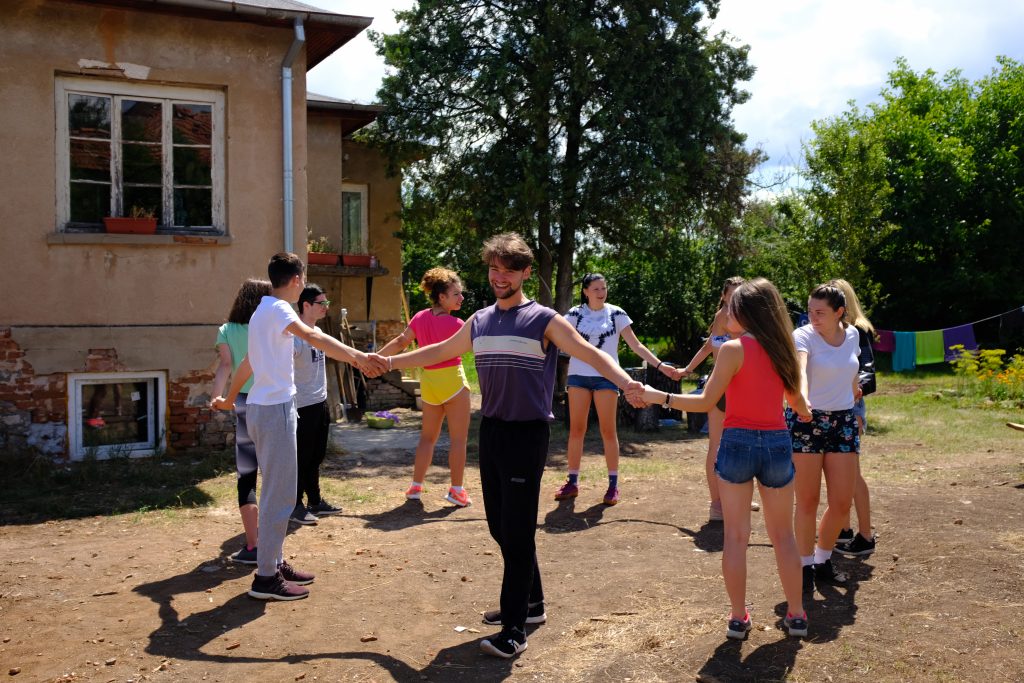Name of the organization: Solidarity Works Foundation
Website: solidarityworks.eu
Brief description of the organization
Solidarity Works Foundation is a Bulgarian-registered non-profit organization that is financed through donations and project funding. The foundation is a voluntary, self-governed, community-based organization without political or religious affiliation. Its mission is to promote, encourage, and support the sustainable development of individuals and communities through solidarity and collective action for social change.
The main areas of work are:
- to empower individuals, marginalized groups, and other collectives
- to support the equal access to education and opportunities for development, and work to overcome the impact of inequality, as well as reduce it
- to encourage and support solidarity and cooperation between individuals and communities
- to develop the capacity for collective action toward social change
- to conduct advanced sociological research
Problem addressed by the good practice
Given the growing cultural diversity in educational institutions around the world, the topic of how teachers can mindfully educate in a multicultural environment and help create inclusive intercultural experiences for all their students is becoming increasingly important.
Many researchers in the field of education are working to identify best practices through which both students and teachers can find adequate support and develop their communication skills with people from different cultures.
This handbook examines cultural diversity in the context of educational communities and is based on the notion that multicultural education that meets the needs of children and young people can be key to addressing a number of challenges in school and beyond.
Target groups
The manual is suitable for teachers in all levels of education, as well as youth workers.
Summary of the good practice
The teacher’s guide Methods and Approaches for Working in an Intercultural Environment was commissioned by the teaching staff of two kindergartens in Tvarditsa (“Happy Childhood”/”Shtastlivo Detstvo” Kindergarten and “Vasil Levski” Kindergarten) as part of educational training for pre-school teachers, which the Solidarity Works Foundation held in August 2019.
The guide is written by Maggie Nazer, Executive Director at Solidarity Works Foundation, sociologist, and Lindsay Day, a fellow at Solidarity Works Foundation and a preschool teacher at Albany Community School, Vermont, USA.
The handbook provides theoretical information as well as recommended activities, which will help the reader to:
- learn basic concepts in intercultural education and ideologies related to different cultural models and approaches to work in a multicultural environment
- understand the meanings and importance of the concepts of culture, race, socio-economic status, etc. when working with children and young people
- build a positive approach to working with children and/or young people that welcomes cultural differences and cultural diversity
- explain how racism, discrimination, and stereotypes have a negative impact on children and young people of different cultural backgrounds, as well as suggest appropriate alternatives applicable in educational environments
Evaluation
Experts, having a long-term experience, as well as an educational background in the field, created the handbook. In addition, the authors have tested it during the teachers’ training, held in August 2019 and collected feedback from the participants (practising pre-school teachers).
In addition to that, on the page of the manual (where it can be downloaded for free), there is an option for anybody, who has used the material to provide his or her feedback. That includes evaluating the quality of the information; the importance of the topic tackled, as well as suggestions what kind of information needs to be added in order to make the handbook even better. The information gathered through the feedback form is checked by the authors on a regular basis.
Recommendations
The main resources needed to use this good practice is the information, which the handbook contains (knowledge, questions for reflection, and techniques for working in an intercultural environment).
The manual suggests some activities that can be implemented in the classroom but the materials needed are quite common and easy to find (paper, markers, watercolour, stones).
Resources
Information about the Methods and Approaches for Working in an Intercultural Environment can be found on the Solidarity Works Foundation’s website.


